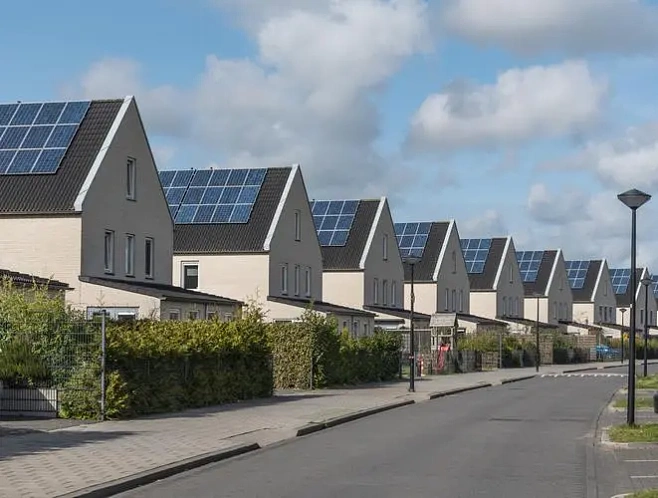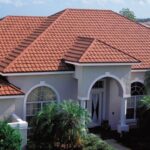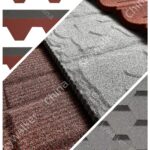In today’s world, where environmental concerns are becoming increasingly paramount, finding ways to reduce our carbon footprint and promote sustainability is crucial. And one area where we can make a significant impact is in our choice of roofing materials. By opting for eco-friendly roof designs, we can not only enhance the beauty of our homes but also contribute to a greener and more sustainable future.
Understanding Eco-Friendly Roofing
Eco-friendly roofing materials are designed to minimize environmental impact throughout their lifecycle. These materials are sustainable, energy-efficient, and often made from recycled or renewable resources. They offer several advantages, including long-term performance, energy savings, and reduced maintenance requirements.
The Benefits of Eco-Friendly Roofing
- Energy Efficiency: Eco-friendly roofs contribute to energy efficiency by providing better insulation and reducing the need for excessive heating or cooling. This leads to lower energy consumption and cost savings on utility bills.
- Reduced Environmental Impact: Sustainable roofing materials are made from recycled or renewable resources, reducing the demand for new materials and minimizing waste. They also help mitigate the urban heat island effect, reducing the overall demand for energy in urban areas.
- Improved Air Quality: Green roofs, in particular, contribute to improved air quality by absorbing carbon dioxide and releasing oxygen through the process of photosynthesis. They also trap airborne particles, reducing pollution and creating a healthier urban environment.
- Stormwater Management: Green roofs act as natural sponges, absorbing and retaining rainwater. This reduces stormwater runoff, which can carry pollutants into waterways and contribute to flooding issues. Green roofs help alleviate strain on sewer systems during heavy rainfall.
- Longevity and Durability: Many eco-friendly roofing materials have a longer lifespan compared to traditional options. They are designed to withstand harsh weather conditions, reducing the need for frequent replacements and extending the lifespan of the roof.
- Enhanced Aesthetic Appeal: Eco-friendly roofs, such as green roofs, add a touch of natural beauty to buildings and create a more visually appealing environment. They can also provide a habitat for local wildlife and contribute to biodiversity.
Types of Eco-Friendly Roofing Materials
Several eco-friendly roofing materials are available on the market today, each with its own unique characteristics and benefits. Let’s explore some of the most popular options:
1. Cool Roofs: Best for Minimalists
Cool roofs, also known as white roofs, are designed to reflect sunlight and keep buildings cooler. They are typically made of light-colored materials such as metal shingles or reflective paint. Cool roofs help reduce energy consumption by minimizing the need for air conditioning, especially during hot summer months. They can also mitigate the heat island effect in urban areas.
Pros: Reduces summer energy bills, helps decrease the heat island effect.
Cons: May cause higher winter energy bills in colder regions, higher chance of mold growth.
2. Green Roofs: Best for Nature Lovers
Green roofs, also known as rooftop gardens, are becoming increasingly popular for their aesthetic appeal and environmental benefits. These roofs are covered with a layer of vegetation, providing shade, absorbing carbon dioxide, and reducing the overall temperature of the building. Green roofs also improve air quality, manage stormwater, and create habitats for wildlife.
Pros: Improves air quality, helps sustain plant and wildlife, improves drainage and energy consumption.
Cons: High upfront cost, requires ongoing maintenance, adds weight to the roof.
3. Metal Roofs: Durable and Recyclable
Metal roofs are known for their durability and longevity. They can last between 40 and 80 years, with some materials, like copper, lasting over 100 years. Metal roofs are often made from recycled materials and can be recycled again at the end of their lifespan, reducing waste. They are naturally reflective, contributing to energy savings, and can withstand harsh weather conditions.
Pros: Long-lasting, reflects heat and reduces energy bills, 100% recyclable.
Cons: Can possibly be dented, noisy during rain and thunderstorms.
4. Reclaimed Clay Roofs: Eco-Friendly Elegance
Clay roofs have been used for centuries and are known for their elegance and durability. Reclaimed clay roofs, in particular, are an eco-friendly option as they are made from all-natural materials and can last for a century or more. Clay tiles reflect sunlight, reducing heat absorption and energy consumption. They add a layer of upscale luxury to any home.
Pros: Can last for a century, uses 100% natural materials, adds a layer of upscale luxury.
Cons: Adds weight to your home, fragile material.
5. Slate Tile Roofs: Timeless Beauty
Slate tile roofs offer a timeless and aesthetically pleasing option for homeowners. They are highly durable and can last for hundreds of years with proper maintenance. Slate tiles are fire-resistant and provide a natural, historic aesthetic, making them an excellent choice for stone and brick homes. They can be made even more eco-friendly by using reclaimed and all-natural materials.
Pros: Lasts for hundreds of years, offers a natural, historic aesthetic, uses all-natural materials.
Cons: Requires professional installation, requires additional structural support.
6. Solar Roofs: Harnessing the Power of the Sun
Solar roofs are a relatively new and innovative option for eco-friendly homeowners. These roofs are made up of small, high-efficiency solar panels that mimic the appearance of roof shingles. Solar roofs generate renewable energy, reducing dependence on traditional energy sources and lowering carbon emissions. They can be monitored through smartphone apps and may come with solar battery options.
Pros: Generates renewable energy, reduces carbon emissions, offers active monitoring.
Cons: Higher upfront cost, requires professional installation.
Choosing the Right Eco-Friendly Roofing Material
When selecting an eco-friendly roofing material, there are several factors to consider:
- Sustainability: Choose materials that are made from recycled or renewable resources and sourced without causing significant environmental damage.
- Performance: Look for materials that offer durability, energy efficiency, and resistance to weather conditions.
- Recyclability: Opt for materials that can be recycled at the end of their lifespan to minimize waste.
- Cost and Maintenance: Consider the upfront cost, long-term maintenance requirements, and potential savings on energy bills.
- Aesthetic Appeal: Choose a roofing material that complements the architectural style of your home and enhances its overall appearance.
Government Incentives for Eco-Friendly Roofs
Many governments and local authorities offer incentives and rebates for installing eco-friendly roofs. These incentives can help offset the initial cost of installation and make sustainable roofing options more affordable. Check with your local government or utility companies to explore available programs and tax credits.
Is an Eco-Friendly Roof Right for You?
While eco-friendly roofs offer numerous benefits, they may not be suitable for every situation. Consider the following factors when deciding if an eco-friendly roof is right for you:
- Budget: Eco-friendly roofing materials can be more expensive than traditional options. Evaluate your budget and determine if the long-term benefits outweigh the initial cost.
- Climate: Consider the climate in your area and choose a roofing material that can withstand local weather conditions.
- Structural Support: Some eco-friendly roofing materials, like green roofs, require additional structural support due to their weight. Ensure your building can accommodate the chosen roofing system.
- Maintenance: Assess your willingness and ability to perform regular maintenance on eco-friendly roofs, especially for options like green roofs that require ongoing care.
By considering these factors and consulting with roofing professionals, you can make an informed decision about whether an eco-friendly roof is the right choice for your home.
Conclusion: Building a Sustainable Future, One Roof at a Time
Choosing an eco-friendly roof is not only a smart investment for your home but also a contribution to a sustainable future. By opting for materials that are renewable, energy-efficient, and recyclable, you can reduce your carbon footprint, lower energy consumption, and create a healthier environment for generations to come. Whether you choose a cool roof, green roof, metal roof, reclaimed clay roof, slate tile roof, or solar roof, each option offers unique benefits that align with your sustainability goals. Embrace the power of eco-friendly roofing and be a part of the movement towards a greener and more sustainable world.




